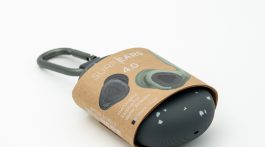By Cara Wood and Francesca Nicasio.
Original Content Sourced from Vend HQ Blog
Ever see people walk into your store, look at a few things and walk right back out without purchasing? Every time someone does that, you’re losing out on profit. The good news is that you can fix this by working on increasing your conversion rate.
Your conversion rate is the percentage you get when you divide the number of purchases by the number of people who came into your store. In order to figure this out, you will need to get a counter installed at your door if you don’t already have one. (Do note that an in-store conversion rate is a close approximation rather than exact because your counter will count employees as well customer companions such as kids or spouses.)
Once you figure out your current conversion rate, you can set yourself a goal and start using the following techniques to achieve it. As a note, if you’re starting conversion rate is truly abysmal (think 15% or lower), you should check your marketing. You may be mis-marketing your store, bringing in shoppers expecting something completely different than what you offer.
1. Set up your Store for Success
The very first thing you’ll want to look at is how your store is set up. Where are the displays? How long does the queue usually look? Does the store look packed to the rafters or is it easy to find things?
Unless you are a discount retailer like TJ Maxx, you don’t want your store looking like your customers will need to hunt through racks and racks to find things. Instead, set up clean displays that make it easy for shoppers to find unexpected items they just have to have.
Here are some ideas:
- Use your “power wall” wisely. If you’re in the US (or a country where people drive on the right side of the road), use your rightwall to make a big statement, because customers naturally turn to the right when they walk in. But if you’re in the UK, Australia, or New Zealand, your power wall is located on the left, since most of your shoppers will have a tendency to turn left when they enter your store.
- Remove excess merchandise from the floor(i.e., only have one of each size or product on the floor) to keep the store from looking cluttered.
- Mind your decompression zone, which is the first 5 to 15 feet inside your front door. Shoppers who are in this part of your store are prone to distractions, which is why most experts agree that retailers should keep the decompression zone simple and uncluttered. Avoid placing too many products or fixtures in this area, as people will likely just walk right by them.
2. Hide your queue.
Customers can be easily spooked if they see a lengthy queue. The good news is that there are a number of ways to fix this.
- Put your registers in the back. You’ll notice that many stores do this. New York & Co., for instance, places their registers at the centre-back of the store by the fitting rooms. The registers are further obscured from sight because they usually have several high displays creating “rooms” positioned well around the checkout area.
- Get rid of the registers all together and go mobile.By allowing your employees to ring customers anywhere on the floor, you’ll get rid of your queue altogether. Of course, if that doesn’t work for your business, simply adding mPOS systems will help you reduce your queue, at the very least.
3. Staff according to traffic, not just sales.
Many stores will schedule their staff according to hours where the most sales are made, rather than the amount of traffic walking through the door. By switching to heavily staffing when there are many customers in the store, your employees will be able to more effectively help everybody, which will likely result in an uptick of sales.
4. Recognise that your employees play a huge role in boosting conversions.
This point is part and parcel of the previous point. Not only do you need to be well-staffed, but it’s essential that you train your employees well. In terms of increasing your conversion rate, there are some important things your staff can be taught to do:
Have them greet and engage each and every customer in the store. It’s fairly rare for a shopper to engage an employee out of nowhere when they need assistance, so have your staff establish the relationship.
An easy method to ensure that your staff is greeting everyone is to have someone work the front zone specifically to greet people.
Consider what American Eagle is doing. Walk into any AE shop, and you will be greeted by someone who “just happens” to be folding and tidying up near the front. American Eagle’s method can seem less intrusive and could fit your branding better.
Train your staff on how to prompt customers to share what they’re looking for.
The bulk of this is to ensure that they don’t ask yes or no questions. For instance, “Can I help you find something?” will most often be met with “No.” But “What are you looking for today?” requires the shopper to engage with the question a bit more, even if the answer is negative.
Put in the effort — and mean it.
Once your staff member has identified the customer’s wants/needs, train them to go above and beyond in solving these problems. When your employees are putting in a huge amount of effort, they will…
a) Most likely come up with a great solution; and
b) convince even iffy shoppers to make a purchase.
And even if your staff is well-trained at this, you can always incentivise them to help you reach your objectives by offering them a prize for meeting the goals.
5. Give free samples, nibbles, or drinks.
Ever wonder why Costco has made free samples a part of their business model? It’s for a number of reasons, but the main one is that, as Dan Ariely, a Duke University behavioural economist, says, “Reciprocity is a very, very strong instinct.” Basically, when Costco gives you a free sample, you feel obliged to do something for them. Ariely also points out that free samples remind you of cravings you have, making you want to buy what you just sampled.
If you’re selling something that can’t be given away as samples, then find something else to offer. Several retailers are now serving drinks to get people to come in and linger.
Take Birchbox in SoHo. I visited the shop in January and upon walking in, an associate gave me a warm welcome and directed me to the counter where they had free champagne. It was an effective tactic; having a drink not only made shopping more fun, but it encouraged me to stay and walk around the store. (And yes, I ended up buying something in the end.)
Not to keen on giving away freebies? Consider charging for samples, instead. Wineries, in particular, make great use of this concept. Wineries offer tastings of their wines at a fairly inexpensive cost. This gets customers in the door. During a tasting, the employee running the tasting will give a lot of wine education to the tasters and more often than not give the tasters “extra” wine or offer to taste a wine that’s not on the menu. According to an informal survey I ran this weekend in Sonoma, it’s pretty rare that for a customer to leave a tasting without buying at least one bottle.
Any business model can find a way to give something to a customer to encourage them to purchase. Sephora, for instance, offers free mini-makeovers to anyone and I dare you to tell someone you won’t buy anything after they just spent 15 minutes slaving over giving you perfect eyebrows
6. Use social proof.
Social proof means showing your customers that other people have bought or want to buy your products. The most obvious example is when an online store offers reviews of a product on its page. You can replicate this in your store as well!
In Amazon’s physical locations, for instance, each printed product tag contains a snippet of a highly starred review from their website, clearly demonstrating that others have bought and loved the product. McDonald’s offers another option: tell your customers how many people have bought from you. They famously include their number right in their street signs.
7. Create the feeling of scarcity.
Scarcity is a well-known psychological trick to increase an item’s perceived value. Scarcity makes something seem special to a customer. There are a number of ways you can make things feel scarce in your store.
- Reduce the amount of merchandise on your floor.Not only does this make the floor feel de-cluttered, but it can make customers think that the item on the floor is the last one in stock.
- Train your staff to let customers know when something really is the last one that you have. It’s an easy sales line that can help them close a deal. As a salesperson myself, I used to love being able to say to a woman, “You’re in luck! That’s the last one of those dresses we have and it’s just your size!” Nothing would make a customer jump at buying one of our clothing items faster than knowing it was the only one left *and* it happened to be in her size.
- Run limited-time promotions to provide a temporary boost in your conversion rate and artificial scarcity. By limited-time I mean very short, not several days or a week. A great example is door-buster sales on Black Friday. These sales typically only last until noon and/or until the products sell out. Running a one-day-only sale will create a sense of urgency for your customers, making them feel like they don’t have much time to get that amazing deal.
8. Get customers to invest time with you.
The more time a customer spends in your store, the more likely they are to purchase something. The Wall Street Journal actually says that you can see up to a 40% sales increase from encouraging your customers to hang around. We’ve already done a full guide on how to effectively encourage your shoppers to linger, so here are the highlights:
- Offer amenities to make shopping easier and more fun. Rebecca’s Herbal Apothecary & Supply, for instance, has a children’s corner in the back of the store for parents shopping with kids. Happy kids = happy shoppers, after all. And Costco, as previously mentioned, offers those free samples in part because they make grocery shopping a fun and surprising experience.
- Train your employees to help your customers spend time in the store. Jumping back up that winery example, part of educating customers about your wine is giving out awesome free education, but another part is that the more the employee converses with the customer, the more time the customer has invested in that winery.
9. Have a backup plan for products you don’t have in store.
Give your customers no excuse not to spend money with you. Have a plan for customers looking for an item that your physical store is out of. DSW ensures customers purchase from them by offering free shipping on an item when they’re out of stock in their store. The associates can also ring customers for that purchase right from the floor on a mobile device so that the customer experiences minimal frustration. Hopefully very soon in the future, you’ll even be able to offer same-day delivery on such items so that customers don’t even have to wait for these items.
10. Offer flexible payment options
Sometimes, a limited budget is the only thing keeping a customer from purchasing. If this is the case, consider being more flexible with how you accept payments. For example, you could provide layby or instalment options.
If you’d like to get paid upfront (and who doesn’t) then offer a “buy now pay later” option through a solution like Afterpay. Afterpay enables customers to pay for their purchases in instalments. When customers purchase goods with Afterpay, you receive payment for the items upfront while your customers pay in four fortnightly instalments. It’s interest-free and when paid on time there are no extra costs for your customers.
Afterpay not only provides a payment solution to help customers out, it also aids your sales team. As Bill Parry, Head of Sales – SMB at Afterpay says, “Afterpay is more than a payment method, it is a sales tool your team can use to drive results in-store. By integrating Afterpay into your team’s sales journey, you can combat objections and remove barriers to purchase by offering a simple way for your customers to pay for their purchase over 4 instalments.”
Conclusion
Increasing your store’s conversion rate is no simple task, but by using the above methods, you’ll find that you can reach your goals.
About Francesca Nicasio
Francesca Nicasio is Vend’s Retail Expert and Content Strategist. She writes about trends, tips, and other cool things that enable retailers to increase sales, serve customers better, and be more awesome overall. She’s also the author of Retail Survival of the Fittest, a free eBook to help retailers future-proof their stores. Connect with her on LinkedIn, Twitter, or Google+.








